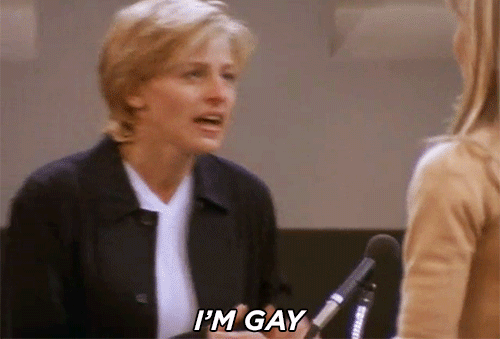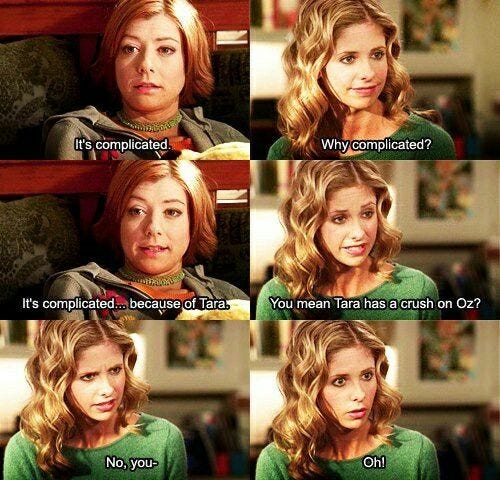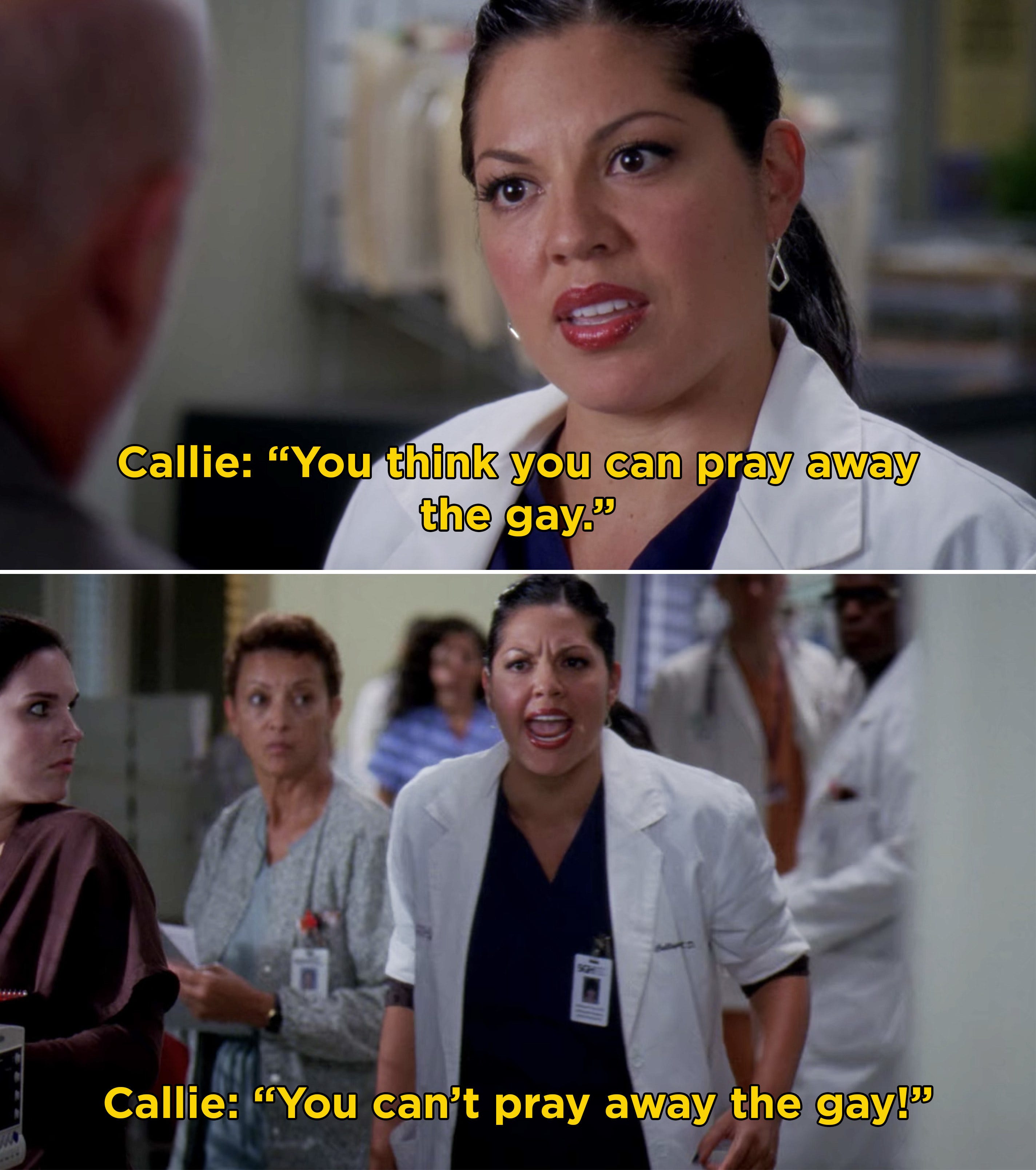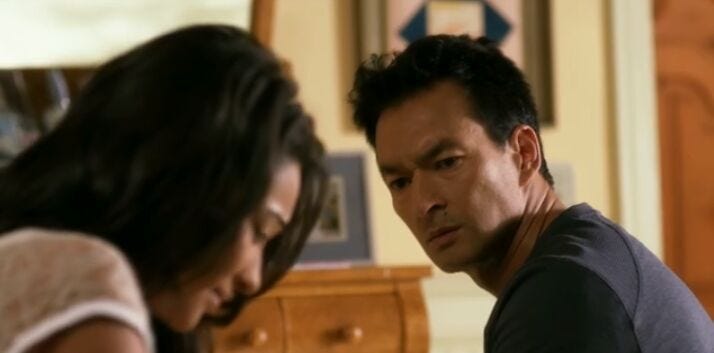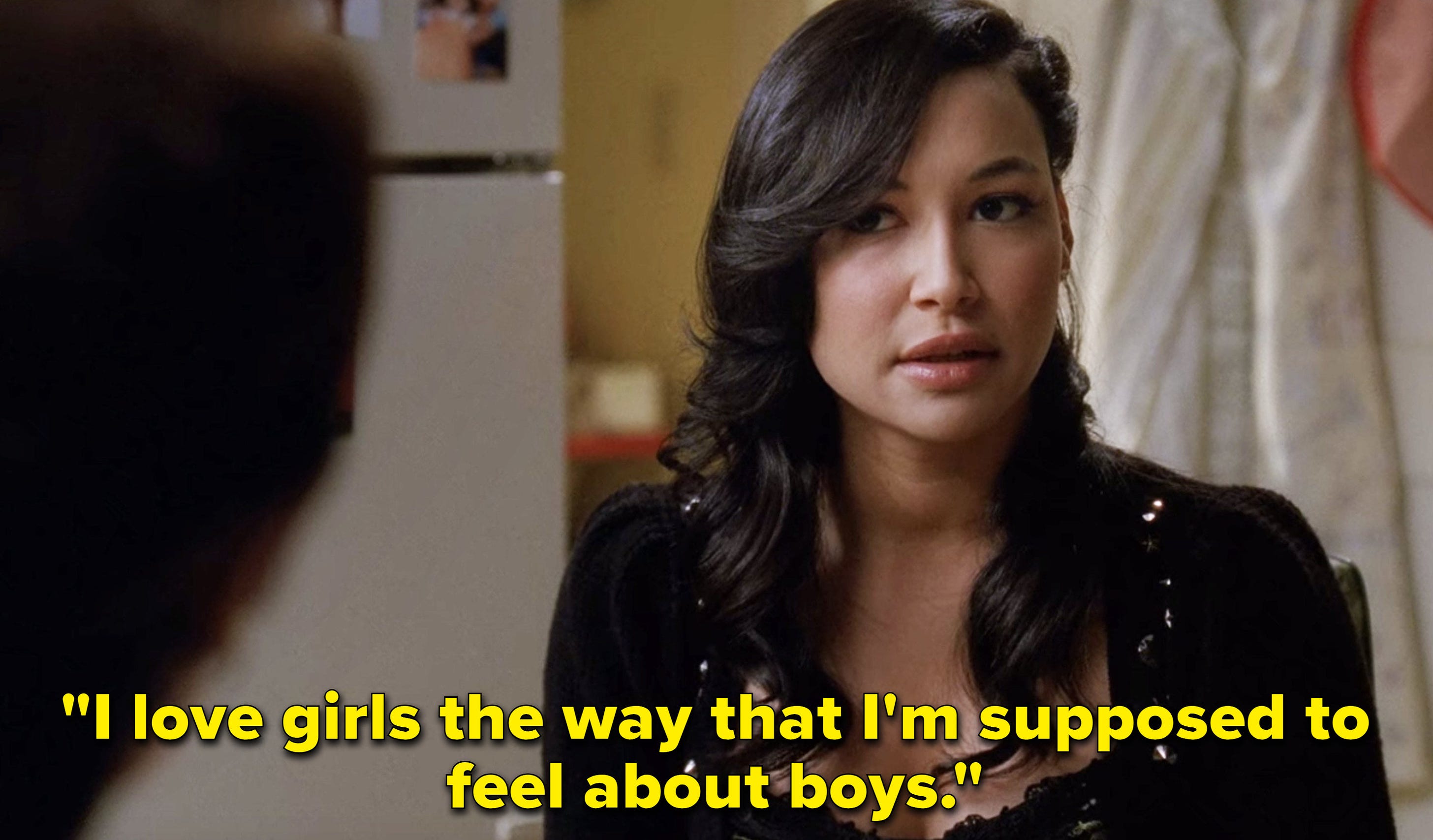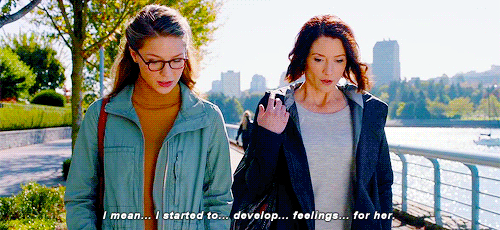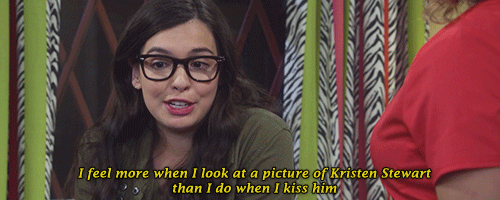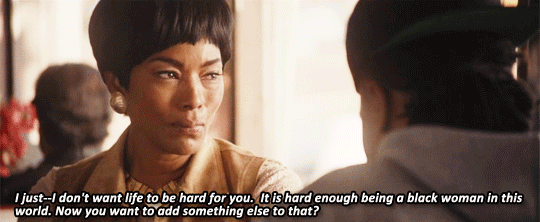Paging Dr. Lesbian - Come Out, Come Out
This is the Sunday Edition of Paging Dr. Lesbian. If you like this type of thing, subscribe, and share it with your friends. This post is too long for email, so click on the headline to read on-site (or read on the app). Coming-out scenes have a long and storied history within television and film. When queer and trans characters¹ first started appearing on screen, these revelations were often played for shock value, or, in some cases, used as teaching moments. It’s been twenty-five years since television’s most famous coming-out scene – Ellen on her sitcom Ellen – and the television landscape has changed a lot since then. But the popularity of the coming-out scene has endured, and has arguably gotten even more popular since Ellen’s time. In honor of National Coming Out Day, which was earlier this week, I thought we might take a trip down memory lane. In recent years, there have been debates about the overuse of the coming-out story, with many arguing that there is more to queerness than coming out. This is certainly a valid criticism, but it’s clear that there is something narratively compelling about the dramatic coming-out scene. It’s an obvious moment of climax for a story, and it often involves a reckoning of sorts for a character or a group of characters. It’s no surprise queer stories are so often told in this way. I wonder, then, if there’s a way we might evaluate the utility of these coming-out moments by considering both their emotional impact and what’s changed over the years. What makes a “good” coming-out scene? And, in a related vein, what do we want from a coming-out scene? Is it catharsis? Heartbreak? Hope? At this juncture, we may also want to consider if what we want from a coming-out scene is what we get, and what happens when there is a disparity between these two things. It’s clear that the idea of coming out has changed significantly over the last 25 years. Think, for example, of the vast difference between Ellen’s famous “Yep, I’m gay” Time Magazine cover and Madonna’s recent Tik Tok where she seems to announce that she’s gay by throwing a pair of underwear into a wastebasket. We might assume that these changes have been reflected on television, and in certain cases, that’s true. But coming out still remains a central component of many queer storylines on screen, even as formally coming out seems to have become less imperative for young people today. In order to examine these questions, I’ve taken a look at ten television coming-out scenes² from the last 25 years. There are some commonalities between these scenes, but they vary somewhat in tone and messaging. This is not a totally objective list, as some of these are personal favorites of mine, but I tried to include several different takes on what coming out has looked like on screen. As we go along, I hope you’ll get a sense of what these scenes mean to us as a culture and how we’ve absorbed these impressions over the years. I would love to hear from you about your own favorite coming-out scenes in the comments below. Ellen’s meta coming out (Ellen, 1997)This wouldn’t be a complete list if I didn’t begin with what is arguably the most famous coming-out scene (and episode) of all time. Ellen Morgan (the character played by Ellen DeGeneres), came out on her show in 1997 on a two-part episode called “The Puppy Episode.” Ellen meets Susan (Laura Dern), who she learns is a lesbian. Ellen’s attraction to Susan leads her to realize that she is also gay. She finally works up the courage to share this with Susan at the end of the episode when she meets her at the airport. After pacing around anxiously and being unable to say the words out loud, she finally says “Susan, I’m gay,” right into the intercom, broadcasting the announcement to the entire terminal. The studio audience cheers and Susan hugs Ellen, and it feels very much like Laura Dern herself is congratulating Ellen (the real Ellen) for coming out as well. In terms of emotional impact, the scene (as well as the entire two-part episode) is both cathartic and funny, and it swings rather brilliantly between earnestness and irreverence. But the intercom gag is not just a joke, it’s also a metaphor for the fact that it was not just Ellen Morgan who was coming out, but Ellen DeGeneres as well. Oprah is also featured on the episode as Ellen’s therapist, just like Oprah was the first person to have Ellen on her show after she came out. It’s an extremely important moment in television history, and the meta nature of the episode is something we haven’t really seen since. (Though several actors – including Sara Ramirez and Chyler Leigh, both of whom feature on this list – have famously come out after playing queer characters on TV.) Unfortunately, Ellen was canceled the following season and Ellen’s career struggled thereafter, but it remains an extremely successful episode both in terms of emotional and cultural resonance, and its celebrated status is well-deserved. Willow comes out to Buffy (Buffy the Vampire Slayer, 2000)Like most supernatural and/or science fiction shows, Buffy The Vampire Slayer is a series that traffics in metaphor and analogy. The supernatural storylines on the series are often read as metaphors for otherness in regard to categories like race and sexuality, despite the fact that there are very few characters of color on the show. When Buffy “comes out” to her mother as the Slayer, it’s a very obvious metaphor for coming out as gay. But, thankfully, Buffy also featured a prominent gay character as part of the main cast. Buffy’s best friend, Willow, realizes that she’s gay when she meets a fellow witch named Tara. Though it was the year 2000, Willow’s coming out is fairly casual and understated. (To give you a better sense of the homophobia of the era, Willow and Tara weren’t permitted to kiss on screen for a full season after they got together.) Willow’s (ex) boyfriend Oz has returned and is no longer a werewolf, and Buffy is confused as to why Willow’s not more excited. “Because of Tara,” Willow says. It takes Buffy a moment, but she finally understands Willow’s meaning. At this point, Buffy starts pacing around the room, doing her best to reassure Willow that she’s fine with it. But she’s clearly freaking out a bit, and Willow notices after she keeps calling her “Will” a little too enthusiastically. But Buffy is a good person, and a good friend, so she tamps down what is her obvious shock and mild discomfort and promises Willow that she’s happy for her. From then on, Buffy is nothing but supportive of Willow and Tara’s relationship, but her initial hesitation is exactly what makes the scene so effective. It offers the audience a sense of realism, and perhaps a lesson in the importance of supporting your friends when they are in need of reassurance. It’s subtle, but the emotional payoff is no less profound, especially considering the time period. Blair helps Eric come out (Gossip Girl, 2008)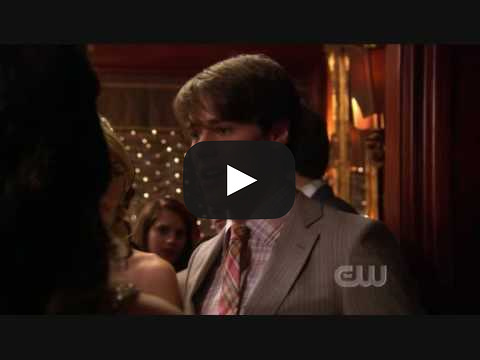 In many teen shows in the 2000s, a character’s queerness was played for shock value or used as another salacious storyline among gossip-obsessed high schoolers. The show that best exemplified the glossy, lecherous tone of teen shows around this time is Gossip Girl. You may have forgotten this, but Gossip Girl did actually feature a gay character – Serena’s younger brother, Eric. Eric begins the season in a mental hospital after attempting suicide, and we later learn that he’s also gay. Oddly enough, Eric finds an ally in Blair, the Upper East Side’s resident mean girl and gossip queen. Blair is at war with Jenny, who is becoming increasingly popular. Jenny is now dating Asher, who had also been secretly hooking up with Eric. Gossip Girl gets a tip that Asher was kissing a boy, which he denies (though he tells Jenny privately that he’s just using her as his beard). Blair confronts Asher at a party, but Eric steps in, telling her he’s got it. “I’m gay. And so are you,” he says, as the whole party goes silent. “Get this faggot out of here,” Asher responds. Blair then proceeds to send the photo of them kissing to Gossip Girl, thus ruining his and Jenny’s reputations. Eric’s coming-out story is not a particularly great one, all things considered. The nefarious Georgina outs him to his mother and sister earlier in the episode, and the only reason he comes out is because of all the Gossip Girl drama. At the very least it's nice to see Eric have a smidge of agency in how he comes out to his classmates, but, like many scenes of this nature, it underplays how damaging the notion of outing someone can really be. Callie’s coming-out speech (Grey’s Anatomy, 2009)Calliope Iphegenia Torres (Sara Ramirez) has the distinction of being the longest-running queer character in TV history. She’s long been a favorite among queer viewers, and her place in the queer TV pantheon was solidified in Season 6 after a confrontation with her father and a priest. Callie has just started dating Arizona, and her very Catholic father finds out. He brings their priest to the hospital, and Callie is having none of it. Her father tries to get her to calm down by using her full name, and she responds by yelling, in a hallway filled with people: “You can’t pray away the gay!” The scene immediately became iconic, as did the next scene between them. Callie’s father, the priest, and Callie are sitting at a table, and her father begins quoting scripture at her in order to prove how sinful she’s being. Callie begins quoting Jesus right back at him, ending her speech by saying “Jesus is my savior, Daddy, not you, and Jesus would be ashamed of you.” Grey’s Anatomy is an exceedingly dramatic show and Callie is a fiery character, so these scenes offer what we might expect from a coming-out narrative. Rather than being sweet or soft, it’s angry and passionate. The catharsis this scene provides doesn’t stem from love and acceptance, but rather emerges from Callie’s insistence on standing up for herself. It’s cheer-worthy as opposed to being heartwarming, and Callie’s fortitude in these moments is probably more aspirational than it is relatable. Emily comes out to her dad (Pretty Little Liars, 2011)It’s interesting to compare Pretty Little Liars to a show like Gossip Girl, as they are both shows about how damaging secrets can be. As opposed to Gossip Girl, where the gay character is only ancillary to the main group, Pretty Little Liar’s Emily Fields (Shay Mitchell) is one of the core four. As in Gossip Girl, Emily’s queerness is a secret that’s used against her by the mysterious “A.” She starts dating Maya, but her parents don’t know. It finally comes to a head when her dad, who’s been away with the military, comes home and can tell something’s wrong. He asks her what she’s afraid of and she tells him she’s afraid of him and her mom because she’s not what they think – she’s gay. Her dad takes it relatively well, but her mom totally freaks out, and Emily hears their conversation from the stairs. (In the books, Emily’s mom actually sends her to a conversion therapy camp, so her reaction in the show is comparatively tame.) We also learn that someone, presumably A, sent Emily’s mom a picture of her and Maya kissing, so she’s known all this time. Luckily, Emily receives unequivocal support from her friends – they even arrange it so she and Maya can have a secret date – but her story isn’t a happy one, at least not at first. Emily’s coming-out moment is more tragic than it is cathartic, and it takes her mom quite a long time to come around. It’s troubling that Emily’s queerness is conflated with the other girls’ secrets (which include parental infidelity, sleeping with your teacher, and shoplifting), but a cursory glance at the comments section of the video illustrates that it was meaningful for viewers to see a story that wasn’t all sunshine and roses. Santana comes out to her abuela (Glee, 2011)2011 was a big year for teen lesbians coming out on TV. Emily Fields came out to her family at the beginning of the year, and Santana Lopez made the leap as the year came to a close. Naya Rivera’s Santana was beloved by queer viewers from the moment she first appeared on our screens. On the surface, Santana was a mean girl, ready with insults and take-downs for any occasion. But her tough exterior hid a soft heart, something we got to see through her relationship with her girlfriend (and eventual wife), Brittany. Though Santana and Brittany were together in some capacity for most of the series, Santana didn’t officially come out until Season 3, when she decided to finally tell her abuela. “I love girls the way that I’m supposed to feel about boys,” she explains, describing how she finally understands what love means now that she’s with Brittany. She also explains how fighting with this part of herself has made her angry with everyone around her, but that she no longer wants to fight. Her abuela doesn’t take it well. “Everyone has secrets, Santana. They’re called secrets for a reason,” her abuela says, before demanding that Santana pack her things and go. The scene is acted wonderfully by Rivera, and it also has the important function of humanizing Santana, a character who doesn’t always put her best foot forward (though we love her nonetheless). It’s not a joyful moment – instead, it’s heartbreaking – but we're proud of Santana for her bravery here. Santana was especially important to queer Latinx people, who found themselves in both Santana’s struggles and her triumphs. If anything, her coming-out moment made fans love her even more, as we felt ourselves rooting for her and celebrating her powerful vulnerability. Alex comes out to Kara (Supergirl, 2016)Sixteen years passed between Willow’s coming out on Buffy and Alex’s on Supergirl, but we can find some commonalities between the two scenes. Alex (Chyler Leigh, who came out herself while working on the show), has become close with Maggie, which has caused her to realize that she’s gay. She reveals this to her sister, Kara (aka Supergirl), normally a veritable ball of sunshine, and her reaction isn’t immediately celebratory. She seems confused at first and then becomes thoughtful, and concerned. Their conversation continues later in the episode, and the heart of the matter is revealed. Alex confronts Kara about the fact that she’s been acting weird since she told her about Maggie, and Kara finally explains herself. Kara tells Alex that she’s not upset with Alex for being gay, but rather with herself for not making enough space for Alex to share how she was feeling because of how much of their lives have been centered around Kara and her powers. Instead of making Alex feel guilty for keeping this “secret,” Kara puts the onus on herself and reflects back on how she could have been more supportive. Like Buffy before her, Kara’s initial awkwardness about the topic feels real, but she more than makes up for it by being completely there for Alex going forward. In the first scene, Alex is nervous and uncertain, but she finally gets that cathartic release in their second conversation and allows herself to gush about how much she likes Maggie. The scene gives viewers that same cathartic feeling while also endearing us even further to Alex’s character through her vulnerability. Moreover, Kara’s support in the second scene is a heartwarming example of unconditional love, one that queer viewers in particular long to see reflected back at them. In this sense, Alex’s coming out might be aspirational or therapeutic to some, regardless of how their own coming-out experience has gone. Elena comes out to her mom (One Day at a Time, 2017)It’s certainly important that queer stories be told from queer perspectives, and these coming-out scenes illustrate the utility of cathartic moments for queer characters and their queer fans. But there’s another function of these scenes in addition to empathy, and that is providing a road map for how one might react to someone else’s coming out. In Buffy and Supergirl, there is an initial hesitation on the part of the recipient of the news, though both characters quickly come around and offer their support and love. In the Norman Lear sitcom One Day at a Time, the reaction itself becomes a central focus. 15-year-old Elena’s (Isabella Gomez) exploration of her sexuality is a big part of Season 1, and she finally comes out to her family in Episode 11. She tells her mother, Penelope, and she takes it quite well, making a quip about how many times Elena watched the Twilight movies. Even Elena’s very Catholic grandmother, Lydia (Rita Moreno) is immediately accepting, rationalizing away her religious homophobia in ten seconds flat. The conversation between Elena and Penelope feels heartfelt, but we learn later in the episode that Penelope is actually struggling with the news. She talks to her lesbian friend about it, but, and this is the important part, she never lets Elena see that she’s having difficulty. Sitcoms – especially Norman Lear sitcoms³ – are well-known for having teachable moments, and this episode could certainly be included in that canon. The takeaway here is not that straight people’s experiences should be centered in coming-out narratives, but that it can be useful to explore what it means to be truly accepting of your loved ones and the work it can take to get there. Denise comes out to her mother (Master of None, 2017)When you talk about coming-out scenes on television, it’s difficult to overlook one of the most celebrated examples of this narrative – the “Thanksgiving” episode of Master of None, written by and starring Lena Waithe. The episode has some elements that are familiar to us – sitting a family member down and trying to speak your truth, a supportive friend – but the way the narrative is structured is unique. Coming-out scenes on television are usually just that – a single scene in which one character reveals themselves to another character. But, as most queer people know, coming out is a lifelong process that doesn’t just conclude after you tell someone for the first time. One of the central scenes of the episode sees Denise (Waithe) coming out to her mother (Angela Bassett) in a diner. Her mother is not accepting, and tells Denise she’s upset that her life is going to be more difficult than it already would be as a black woman in America. The scene is preceded by a moment from some ten years prior, when Denise comes out to her best friend Dev, and he takes the new information with relative ease. Indeed, the primary idea of the episode, if we can whittle it down to a single point, is that coming out isn’t a one-time thing, and it’s not even linear sometimes. Denise’s mother technically hears her when she tells her she’s gay, but it takes her many more years – many more Thanksgivings – to truly accept what she’s heard. Waithe offers up her own experience of growing up queer and black, and in doing so presents a decades-long coming out story that diverges from the well-worn territory we’ve come to expect from these sharable moments. Nick comes out to his mom (Heartstopper, 2022)In recent years, there’s a certain kind of gay media that’s become popular with teens and adults alike. It’s sweet, earnest, and altogether heartfelt. The most recent example of this is the British Netflix series Heartsopper which follows, among other characters, the relationship between two teen boys, Nick (Kit Connor) and Charlie (Joe Locke). Charlie has been out as gay for some time now, while Nick is still coming to terms with the fact that he’s bi. In Episode 8, Nick decides to tell his mother, played by the illustrious Olivia Colman. As Nick tearfully tells his mother about his relationship with Charlie, she reacts in the best possible way, giving him a proud, tearful smile of her own before hugging him and saying “I love you.” The scene is likely to remind some viewers of another popular coming-out scene, the one in Love, Simon when Simon comes out to his mother, played by Jennifer Garner. Garner famously tells Simon “you get to exhale now,” and, watching it in the theater, it was impossible to ignore the sniffles from queer adults who had come out to their families long ago. Because her reaction was so warm and loving, the scene generated a chorus of people expressing their desire to come out to Olivia Colman themselves and receive the same reception. (Similar feelings were directed towards Jennifer Garner following the release of Love, Simon.) In this instance, the queer viewer desires to place themselves in Nick’s shoes, regardless of whether their own coming out experiences have been positive or negative. The scene is cathartic, joyful, and affirming, and it generates a sense of hopefulness that is clearly aimed at teens but has touched the hearts of adults just as much. That’s not to say that coming-out scenes are still necessary for every queer narrative, but it is clear that they still function as a sort of catharsis-by-proxy, especially as they’ve become more positive and heartening as the years have gone on. 1 I’ve chosen not to include any trans characters on this list because I think trans narratives deserve a list of their own. Unfortunately, there also aren’t very many of them. If you’re interested, The Jeffersons actually included a trans character all the way back in 1977, and it’s surprisingly well done considering the time period. Though it’s not a coming-out scene per say, I also love Nomi’s (Jamie Clayton) pride speech from Sense8. 2 I created a YouTube playlist of all the scenes I mentioned – you can watch it here. 3 Lear’s sitcom All In The Family is often considered to have been the first American show to feature a gay character, back in 1971. The Jeffersons is actually a spin-off of All In The Family.
You’re a free subscriber to Paging Dr. Lesbian. For the full experience, which includes weekly dispatches from the lesbian internet, become a paying subscriber. Your support means a lot! |
Older messages
dispatch from a negroni sbagliato with prosecco in it
Wednesday, October 12, 2022
and something about green velvet couches
Lesbians, redacted
Sunday, October 9, 2022
Or, is 'Fried Green Tomatoes' in the lesbian canon?
Oh, The Height!
Sunday, October 2, 2022
Or, Why Are Sapphics So Obsessed With Height Differences?
Bad Girls Rule, Good Girls Drool
Sunday, September 25, 2022
From Cynicism to Optimism in 'Cruel Intentions' and 'Do Revenge'
‘Harley Quinn’ Is a Demented Dream
Sunday, September 18, 2022
Or, The Comic Book Show Where The Sapphic Couple Is Forever
You Might Also Like
Glen Powell to the (couture) rescue
Monday, March 10, 2025
— Check out what we Skimm'd for you today March 10, 2025 Subscribe Read in browser But first: our editors' cult-status products Update location or View forecast Good morning. While we might
Deporting Undocumented Workers Will Make Housing More Expensive
Monday, March 10, 2025
The effect will be most pronounced in Texas and California ͏ ͏ ͏ ͏ ͏ ͏ ͏ ͏ ͏ ͏ ͏ ͏ ͏ ͏ ͏ ͏ ͏ ͏ ͏ ͏ ͏ ͏ ͏ ͏ ͏ ͏ ͏ ͏ ͏ ͏ ͏ ͏ ͏ ͏ ͏ ͏ ͏ ͏ ͏ ͏ ͏ ͏ ͏ ͏ ͏ ͏ ͏ ͏ ͏ ͏ ͏ ͏ ͏ ͏ ͏ ͏ ͏ ͏ ͏ ͏ ͏ ͏ ͏ ͏ ͏ ͏ ͏ ͏ ͏ ͏ ͏
The Viral "Jellyfish" Haircut Is 2025's Most Controversial Trend
Monday, March 10, 2025
So edgy. The Zoe Report Daily The Zoe Report 3.9.2025 The Viral "Jellyfish" Haircut Is 2025's Most Controversial Trend (Hair) The Viral "Jellyfish" Haircut Is 2025's Most
Reacher. Is. Back. And Alan Ritchson's Star is STILL Rising
Sunday, March 9, 2025
View in Browser Men's Health SHOP MVP EXCLUSIVES SUBSCRIBE THIS WEEK'S MUST-READ Reacher. Is. Back. and Alan Ritchson's Star is STILL Rising. Reacher. Is. Back. and Alan Ritchson's Star
12 Charming Movies to Watch This Spring
Sunday, March 9, 2025
The sun is shining, the tank is clean – it's time to watch some movies ͏ ͏ ͏ ͏ ͏ ͏ ͏ ͏ ͏ ͏ ͏ ͏ ͏ ͏ ͏ ͏ ͏ ͏ ͏ ͏ ͏ ͏ ͏ ͏ ͏ ͏ ͏ ͏ ͏ ͏ ͏ ͏ ͏ ͏ ͏ ͏ ͏ ͏ ͏ ͏ ͏ ͏ ͏ ͏ ͏ ͏ ͏ ͏ ͏ ͏ ͏ ͏ ͏ ͏ ͏ ͏ ͏ ͏ ͏ ͏ ͏ ͏ ͏
10 Ways to Quiet Annoying Household Noises
Sunday, March 9, 2025
Digg Is Coming Back (Sort Of). Sometimes the that's noise bothering you is coming from inside the house. Not displaying correctly? View this newsletter online. TODAY'S FEATURED STORY 10 Ways to
The Weekly Wrap # 203
Sunday, March 9, 2025
03.09.2025 ͏ ͏ ͏ ͏ ͏ ͏ ͏ ͏ ͏ ͏ ͏ ͏ ͏ ͏ ͏ ͏ ͏ ͏ ͏ ͏ ͏ ͏ ͏ ͏ ͏ ͏ ͏ ͏ ͏ ͏ ͏ ͏ ͏ ͏ ͏ ͏ ͏ ͏ ͏ ͏ ͏ ͏ ͏ ͏ ͏ ͏ ͏ ͏ ͏ ͏ ͏ ͏ ͏ ͏ ͏ ͏ ͏ ͏ ͏ ͏ ͏ ͏ ͏ ͏ ͏ ͏ ͏ ͏ ͏ ͏ ͏ ͏ ͏ ͏ ͏ ͏ ͏ ͏ ͏ ͏ ͏ ͏ ͏ ͏ ͏ ͏ ͏ ͏ ͏ ͏ ͏ ͏ ͏ ͏ ͏
Weekend: Introducing the Butt Mullet Dress 👀
Sunday, March 9, 2025
— Check out what we Skimm'd for you today March 9, 2025 Subscribe Read in browser Header Image But first: Join the waitlist for a new premium Skimm experience Update location or View forecast
Starting Thursday: Rediscover Inspiration Through Wordsworth
Sunday, March 9, 2025
Last chance to register for our next literary seminar starting March 13. March Literary Seminar: Timothy Donnelly on William Wordsworth Rediscover one of the most influential poets of all time with
5 little treats for these strange and uncertain times
Sunday, March 9, 2025
Little treat culture? In this economy?


